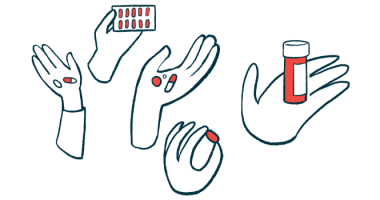New DMD Therapeutic Approaches Under Development Are Reviewed in Article
by |

An update on the current therapeutic approaches being developed to treat Duchenne muscular dystrophy (DMD) has been published in the journal Pharmacotherapy.
The review article, “Advances in the treatment of Duchenne muscular dystrophy: New and emerging pharmacotherapies,” gives an account of the latest investigational treatments for DMD. These include therapies that aim to replace the missing dystrophin protein in the muscles, such as stop codon readthrough, exon skipping, and utrophin modulation, as well as treatments that hope to prevent or repair muscle damage caused by the absence of dystrophin.
Currently, the standard treatment routinely used for DMD are corticosteroids. But they are only supportive and aim to delay the development of the symptoms of the disease.
“However, there is a high demand to expand the number of safe, effective pharmacological options,” wrote Andrea Reinig, first author of the review, and colleagues at Regis University Rueckert-Hartman College for Health Professionals, School of Pharmacy in Denver, Colorado.
Here is a summary of potential therapies that could be treating Duchenne MD in the future:
Stop codon readthrough agents
There are three agents that are being investigated to treat DMD caused by a premature stop signal in the dystrophin gene, the underlying genetic cause of DMD in around 10 percent of patients.
These are amynoglycoside antibiotics, such as gentamycin, arbekacyn, and ataluren. Although research has shown that these agents can increase the production of dystrophin protein in animal models, the results of human clinical trials have been less promising. The effectiveness of all three agents is still being investigated in clinical studies.
Ataluren is approved for the treatment of DMD in some countries, including those in the European Union, under the trade name Translarna, but clinical studies are still in effect. “Additional clinical trials of ataluren are ongoing; however, without statistically significant results, it is unlikely that the FDA will approve ataluren for commercial use,” the authors wrote.
Exon skipping agents
Two main drugs have been developed to skip exon 51 in DMD in an attempt to re-establish the reading frame of the dystrophin gene, which is disrupted by mutations. This strategy aims to produce a semi-functional, smaller protein. Its presence is associated with better clinical outcomes than the total absence of dystrophin.
These drugs are Exondys 51 (eteplirsen) and drisapersen, which could help roughly 14 percent of DMD patients. Exondys 51 was approved by the FDA in September 2016 with the caveat that another efficacy study be conducted. However, clinical trials failed to show the effectiveness of drisapersen and the drug is no longer being investigated in clinical trials.
Potential drugs to skip other exons are also under development to help patients whose condition is caused by mutations in other areas of the dystrophin gene.
Utrophin modulators
A potential drug called ezutromin is currently being investigated in early clinical trials to up-regulate the levels of a protein called utrophin in the body. It is hoped that this naturally-occurring protein could fulfill the job of the missing dystrophin protein in the muscles, as utrophin is 80 percent similar to dystrophin. Early clinical trials testing ezutromin yielded positive results. A Phase 2 clinical trial (NCT02858362) is currently recruiting DMD patients.
Symptomatic agents
These are drugs that do not address the underlying genetic cause of the disease but instead alleviate its symptoms. They include metformin and L-arginine or metformin and L-citrulline; creatine +/- glutamine; and heparin. These drugs are aimed at preventing muscle damage.
The goal of idebenone and vamorolone (VBP15) is to reduce inflammation, while mysostatin inhibitors and GCSF aim to accelerate muscle repair. PDE-5 inhibitors increase blood flow to the muscles, and FG30-19 aims to stop muscle fibrosis.
Many of these agents are currently being assessed in clinical trials and some warrant further investigation due to some promising and some negative results.
“It is imperative that researchers continue exploring pharmacologic approaches to reduce the morbidity and mortality associated with DMD,” the authors conclude. “Pharmacologic advances achieved in the past few years enable optimism for additional treatment options to become available in the near future.”







